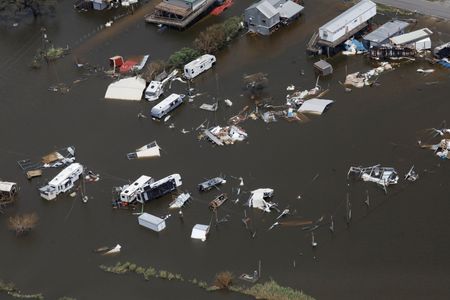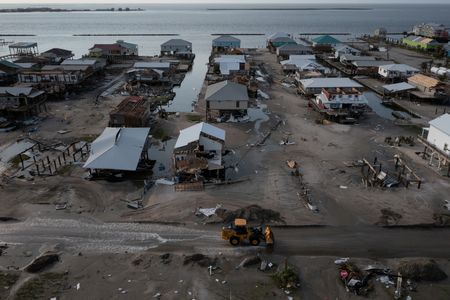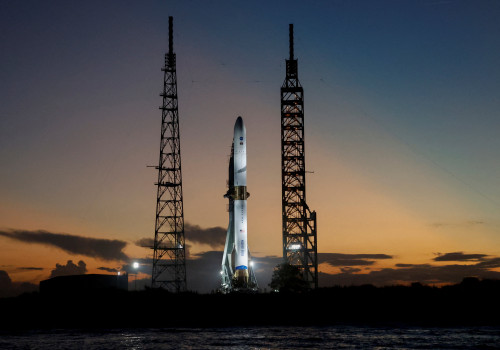By Erwin Seba
HOUSTON (Reuters) -U.S. government forecasters on Thursday said they expect a more dangerous Atlantic storm season than previously projected, raising their Atlantic hurricane outlook due to high sea surface temperatures.
The U.S. National Oceanic and Atmospheric Administration (NOAA) forecast 14-21 named storms, with 6-11 potentially becoming hurricanes with winds of 74 miles per hour (119 kmh) or greater. Two to five of those hurricanes could become major events with sustained winds above 111 miles per hour (179 kmh), NOAA said.
In May, NOAA had predicted 12-17 named storms, 5-8 hurricanes and one to four major hurricanes. The raised outlook follows a similar projection by Colorado State University researchers.
An average Atlantic season has 14 named storms, seven hurricanes and three major hurricanes. The season lasts to the end of November.
NOAA’s forecast was raised “to account for record warm sea surface temperatures in the Atlantic,” said meteorologist Matthew Rosencrans with the agency’s Climate Prediction Center. Sea surface temperatures in the Atlantic where storms generally form are the warmest since 1950, he said.
El Nino, a weather system that forms from warm ocean surface temperatures in the central and eastern Pacific, increases vertical wind shear across the southern United States, lessening or breaking up tropical storms.
But this year’s El Nino may not develop soon enough to reduce the number of storms and their intensity, said Rosencrans.
Storms have not been unusually frequent so far.
“This season is actually right on a schedule,” said Jim Foerster, chief meteorologist at DTN, an agricultural, energy and weather data services provider.
“We normally have our 4th named storm on August 14th and first hurricane on August 11th, and we are at 4 named storms and one hurricane.”
Pacific winds have been blamed for fanning fierce wildfires in Hawaii this week. Hawaii is normally at increased risk of tropical cyclones during El Nino years.
Hurricane Dora’s epicentre currently lies hundreds of miles southwest of the archipelago. It is too early to say whether El Nino had contributed to the storm’s formation, said Chris Hewitt, director of climate services at the World Meteorological Organization.
Major hurricanes can disrupt offshore crude oil and natural gas production in the Gulf of Mexico as well as heavily damage refineries along the Gulf Coast states of Texas, Louisiana and Mississippi.
(Reporting by Erwin Seba; Additional reporting by Gloria Dickie in London; editing by John Stonestreet)






